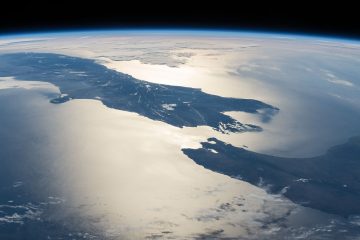APPA Responds to Recent Government Announcements


At the end of 2019 and the beginning of 2020, APPA submitted on three important Government consultations—a proposal to declare some key products “priority products”, a proposal to increase and expand New Zealand’s landfill levy, respectively, and a proposal to transpose the Basel Convention plastic amendments into New Zealand’s import/export rules.
As these proposals would have implications for New Zealand’s plastic usage and our rates of plastic pollution, APPA felt it was important we submitted.
The good news!
This July (2020), in the space of two weeks, the Government announced it would follow through on its proposals (following HUGE levels of support in submissions) to expand and increase the landfill levy, and declare a range of products ‘priority products’, including plastic packaging, farm plastics and agrichemicals and their containers.
We warmly welcome both these announcements. They represent a big step forward in both acknowledging and reducing the harm caused by plastics on our natural environments and human health. They also demonstrate a turning point in Central Government’s willingness to show leadership on waste issues.
By making these announcements, the Government has sent a clear signal that landfills are undesirable and that manufacturers must take responsibility and start designing products in such a way that waste is prevented and reduced, and that the products can be reused as much as possible or be fully recycled at end of life through a ‘closed loop’ process.
The Government has also sent a clear signal that those who most benefit from a particular product—producers, manufacturers and consumers of the product—should cover the costs of managing that product throughout its lifecycle. It’s not up to ratepayers, councils, future generations, or the natural environment – our flora, fauna, awa and moana – to bear these costs. For anyone who has seen The Story of Plastics, you’ll be feeling keenly the significance of ensuring the cost of plastics falls on producers rather than individuals.
As exciting as this moment is, there is much work to be done.
New Zealand, like all countries, faces growing and related plastics and climate crises. Tackling these crises requires dramatic reduction in our use of resources (including the oil we use to make plastics). To succeed, we must shift away from linear, single-use toxic systems, towards circular reuse systems where we conserve the resources and energy we consume, and ensure that we limit ourselves to non-toxic, renewable resources that cycle endlessly throughout the system.
So what does this all mean for the recent Government announcements?
We need a plan
Increasing and expanding the landfill levy is going to mean WAY more money for the Government to spend on waste minimisation activities (from the current $36 million a year to a projected $247 million by 2023). This is a huge opportunity, but harnessing it requires a strategy. New Zealand needs a transparent levy investment plan that clearly prioritises spending on outcomes at the top of the waste hierarchy—i.e. efforts that prevent and reduce waste and reuse resources, before recycling and disposal—and lifting up communities in their zero waste goals, not just big industry.
Alongside the announcement to increase and expand the landfill levy, the Government also announced an injection of $124 million into waste and recycling infrastructure. It’s still very unclear where this money will go. However, there seems to be a disproportionate focus on recycling and very little (if any) allocation for much needed research and investment into infrastructure, systems and logistics to promote reuse, or in community scale infrastructure (though we are very encouraged to see the intention to invest in community resource recovery centres).
The Ellen MacArthur Foundation estimates that 20% of the world’s single use plastic packaging could be replaced with reuse systems. Furthermore, hundreds of businesses (both locally and globally) have committed to increase their share of reusable packaging by 2025 in the New Plastics Economy Global Commitment and the New Zealand Plastic Packaging Declaration. So, how will the spending of levy revenue support these goals?
New Zealand must measure and record plastic flows
In our submission on the increase and expansion of the landfill levy proposal, we supported the proposal to improve waste data, but we noted that the Government’s scope of waste data improvement was far too narrow. In particular, there was no plan to start collecting data on recycling or break data down by the polymer types within the ‘plastics’ category. The Government announcement did not provide clarity on this issue.
Many of APPA’s members are scientists with a keen awareness of the need for a fuller picture of the plastics that flow through our economy—including how much plastic we are recycling, how much stays onshore, how much is exported and much is lost to the environment—broken down by polymer type. It’s not enough simply to collect data on what goes to landfill or broad categories of waste diverted – moving up the waste hierarchy and reducing plastic pollution requires more intel! It is also not enough to prioritise data development without simultaneously investing in prevention – we know enough to know that we need to turn the tap off on plastic pollution now.
Who’s designing the product stewardship schemes?
Plastic packaging (among other things) has been declared a priority product, meaning that a product stewardship scheme for plastic packaging must be developed. Product stewardship is about shifting more of the onus for mitigating and managing the harm a product might cause over its lifecycle on to manufacturers and producers.
Product stewardship for plastic packaging could look like lots of things. For example:
- A levy on all plastic packaging to cover the cost of collection or recycling at end of life. That levy could vary for different polymer types to reflect the fact that some polymers are easier to recycle than others.
- Design specifications, like minimum recycled content (which drives demand for plastic recyclate) or a requirement that all plastic packaging is clear and unpigmented (which makes it easier to recycle).
- Labelling requirements to improve consumer awareness about recycled content, the recyclability of the product, its additives and monomers, ‘compostability’ and responsible management at end of useful life, and carbon miles.
- Levies, restrictions or bans on all single-use packaging to incentivise a shift towards zero waste alternatives, including refillable and reusable packaging solutions.
- Minimum national targets for onshore recycling of PET, HDPE, LDPE, LLDPE, and PP and reduction targets (if not bans) on imports of hard-to-recycle materials .
Basically, the range of things product stewardship could be, spans from glorified recycling through to a shift towards reducing harmful products and increasing reuse systems.
The Government has declared plastic packaging a priority product. The next step is designing the product stewardship schemes—that’s where the devil will be in the detail.
APPA believes that to get the best scheme possible for people and planet, the co-design process cannot be left to Government and industry alone. A wide range of stakeholders must sit at the design table, including tangata whenua, academics and scientists, community and consumer representatives, NGOs and zero waste organisations, recyclers and local government. We believe that the current beverage container return scheme design project process is an excellent model the Government could follow for designing all product stewardship schemes.
Industry cannot be left alone to design the product stewardship schemes that are meant to regulate them as there’s clearly a vested interest. Already, the plastics industry is claiming that subjecting plastic packaging to product stewardship will be bad for the environment. One of the reasons put forward is that singling out plastic packaging will cause a shift to other materials with different impacts, such as glass, which Plastics NZ claims is “worse for the climate”.
These types of arguments also rely on a selective use of Lifecycle Analyses that claim that plastics are climate friendly because they are lightweight so use less carbon to transport. Such arguments overlook the many negative impacts that plastic has over its lifecycle that are not offset by its light weight. The argument also overlooks the fact that most campaigners calling for measures to reduce plastic pollution identify the need to move away from single-use systems towards reuse systems, regardless of material type. Plastics NZ’s positioning demonstrates that the plastics industry does not have adequate faith in product stewardship to justify them developing the scheme alone, without community oversight.
We do agree that the best product stewardship schemes apply across product types rather than material types. For example, the beverage container return scheme is being designed for all beverage containers, regardless of what they are made of (incidentally, this is making the glass industry very upset, demonstrating again that vested interests cannot be left alone to design a scheme). Tackling the waste issue by product category does make the most sense and also makes it easier to move that whole product category up the waste hierarchy to reuse systems.
Nevertheless, declaring plastic packaging a priority product opens the opportunity to address the myriad impacts and cumulative effects that this product causes, including its overuse in situations where arguably no packaging is needed at all, its shockingly low recycling rates (also bad for the climate) and its high levels of leakage into the natural environment. Declaring plastic packaging a priority product also does not stop us from thinking about how we might shift the entire packaging system up the waste hierarchy towards reuse. Indeed, this conversation is beginning in Europe following the Single-Use Plastics Directive, which, although focused on plastics alone, is likely to be implemented through greater reliance on reusable alternatives.
Onwards and upwards
APPA is relieved to see the steps forward in New Zealand waste policy, which will have a positive impact on rates of plastic pollution and waste generation. The announcements come off the back of overwhelming public support for the proposals and demonstrate the importance and relevance of ensuring our community voice is heard. Now, we have to work to keep our collective voice heard, loud and clear, for the sake of both people and planet.


